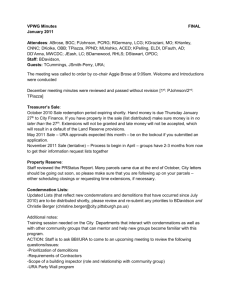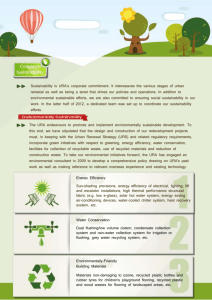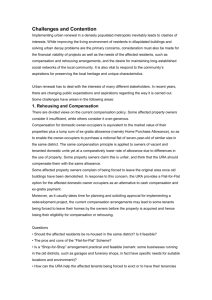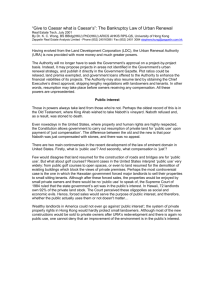Over the decades, Hong Kong has different urban renewal
advertisement
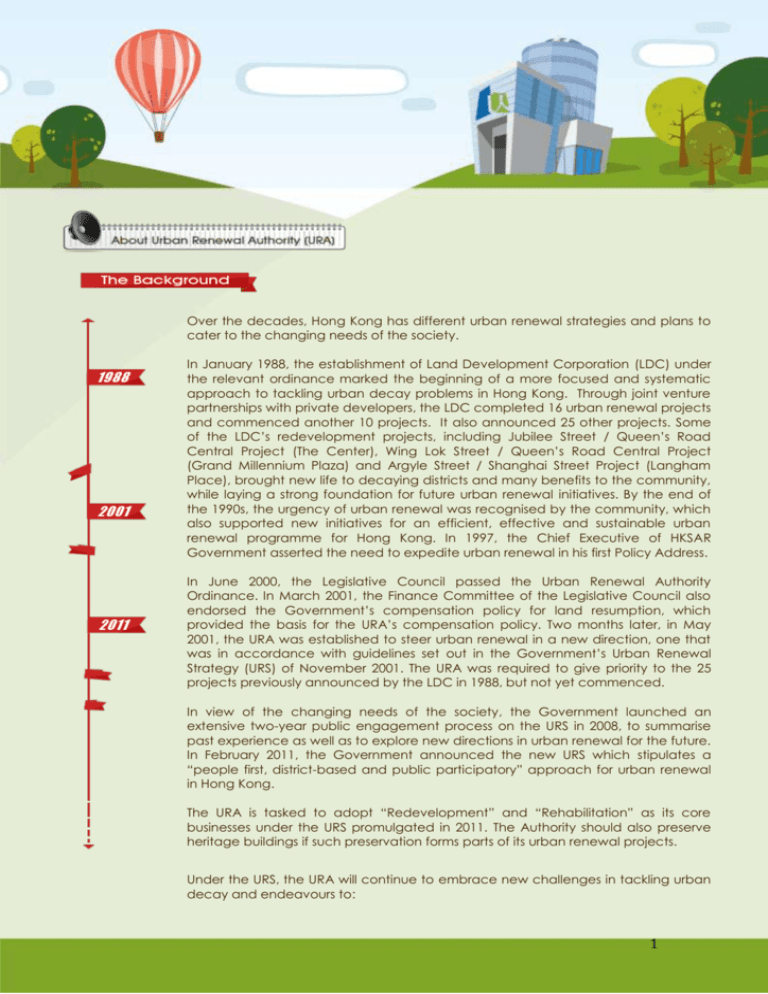
Over the decades, Hong Kong has different urban renewal strategies and plans to cater to the changing needs of the society. In January 1988, the establishment of Land Development Corporation (LDC) under the relevant ordinance marked the beginning of a more focused and systematic approach to tackling urban decay problems in Hong Kong. Through joint venture partnerships with private developers, the LDC completed 16 urban renewal projects and commenced another 10 projects. It also announced 25 other projects. Some of the LDC’s redevelopment projects, including Jubilee Street / Queen’s Road Central Project (The Center), Wing Lok Street / Queen’s Road Central Project (Grand Millennium Plaza) and Argyle Street / Shanghai Street Project (Langham Place), brought new life to decaying districts and many benefits to the community, while laying a strong foundation for future urban renewal initiatives. By the end of the 1990s, the urgency of urban renewal was recognised by the community, which also supported new initiatives for an efficient, effective and sustainable urban renewal programme for Hong Kong. In 1997, the Chief Executive of HKSAR Government asserted the need to expedite urban renewal in his first Policy Address. In June 2000, the Legislative Council passed the Urban Renewal Authority Ordinance. In March 2001, the Finance Committee of the Legislative Council also endorsed the Government’s compensation policy for land resumption, which provided the basis for the URA’s compensation policy. Two months later, in May 2001, the URA was established to steer urban renewal in a new direction, one that was in accordance with guidelines set out in the Government’s Urban Renewal Strategy (URS) of November 2001. The URA was required to give priority to the 25 projects previously announced by the LDC in 1988, but not yet commenced. In view of the changing needs of the society, the Government launched an extensive two-year public engagement process on the URS in 2008, to summarise past experience as well as to explore new directions in urban renewal for the future. In February 2011, the Government announced the new URS which stipulates a “people first, district-based and public participatory” approach for urban renewal in Hong Kong. The URA is tasked to adopt “Redevelopment” and “Rehabilitation” as its core businesses under the URS promulgated in 2011. The Authority should also preserve heritage buildings if such preservation forms parts of its urban renewal projects. Under the URS, the URA will continue to embrace new challenges in tackling urban decay and endeavours to: 1 improve the living environment of those people residing in dilapidated buildings; improve the cityscape of old districts with urban renewal initiatives; provide flats that suit the need of the mass market; preserve heritage buildings within project sites for maintaining integral parts of the city’s history; pursue environmentally sustainable development; and achieve greater community engagement and ensure sensible use of public resources for a better future. Redevelopment can replace dilapidated buildings with modern ones that meet present standards and requirements, especially with regard to environmental protection and energy efficiency. Through comprehensive planning, redevelopment also facilitates infrastructure improvement; traffic and environmental provisions; and the addition of much needed landscaped public open space, greening and community facilities, hence bringing benefits to the community. 2 The URA has implemented over 50 redevelopment projects, providing around 37,000 square metres of public open space and around 75,000 square metres for use of Government/institution/community facilities. For the sake of the community, certain portions of the commercial space of redeveloped sites are reserved for social enterprises; and leased to charitable and non-governmental organisations at nominal rents for social and educational purposes. To tackle the problem of urban decay more effectively, the URA takes more diverse forms of redevelopment according to the URS promulgated in 2011 in order to respond to the property owners’ aspirations. Apart from initiating redevelopment projects on its own, the URA also adopts the “demand-led” approach and the “facilitator” role in order to take forward the redevelopment work through a three-pronged approach. 3 The “demand-led” form allows property owners to initiate redevelopment projects, exemplifying the “bottom-up” approach and speeding up the pace of redevelopment. The URA may respond to a joint approach from property owners to initiate redevelopment of their lot(s)/building(s). After considering factors like the building conditions, planning gain and other factors, the URA as an “implementer” may commence a redevelopment project, if approved by the Financial Secretary, in accordance with the Urban Renewal Authority Ordinance using its statutory power and public money. As of December 2013, the URA has commenced 8 demand-led redevelopment projects 229A-G Hai Tan Street Project in Sham Shui Po (DL1) 205-211A Hai Tan Street Project in Sham Shui Po (DL2) Pine Street / Oak Street Project in Tai Kok Tsui (DL3) Kowloon Road / Kiu Yam Street Project (DL4) Tung Chau Street / Kweilin Street Project (DL5) Fuk Chak Street / Li Tak Street Project (DL6) Wong Chuk Street Project (DL7) Kai Ming Street Demand-Led Redevelopment Project (DL8) As a “facilitator”, the URA provides assistance to property owners to help them go through the process of joint sale in the market, without exercising its statutory power nor using the public money nor involving in any acquisition, compensation, rehousing and land resumption. The first successful joint sale by public auction for a project under the Facilitating Services (pilot scheme) is at 67 - 71 Lion Rock Road in Kowloon City (Details). 4 Building rehabilitation is an important segment of urban renewal. It not only offers speedy improvement to the living conditions of people in-situ and slows down the pace of urban decay, but also reduces the pressure for redevelopment and retains community network. It also fulfils the Government’s policy for sustainable development. Since 2004, the URA has provided property owners with material subsidies and interest-free loans as well as other assistances, including hardship grants, Third Party Risks Insurance Subsidy and professional consultancy fees, aiming to motivate them to repair common areas of their buildings and to create a safe, hygienic and better environment. In fact, rehabilitation is an all-win solution. Property owners can enjoy better living environment and appreciation of the property value; in addition, the district environment can also be enhanced. For optimisation of resources and more effective implementation, the comprehensive Integrated Building Maintenance Assistance Scheme (IBMAS)has been launched since 1 April 2011 and encompasses 4 major areas of assistance: The URA also provides one-stop service and assistance for property owners, including setting up a hotline service and resource centre, and providing advice on external wall colour designs and technical assistance. Since 1 April 2013, the service boundary of the URA under the IBMAS has extended to Kwai Tsing, Tsuen Wan and all Kowloon districts, and will eventually cover the whole territory. 5 The URA has assisted property owners of over 500 buildings to complete building rehabilitation work. Building rehabilitation work includes the renovation of external and internal walls; piping for drainage; flushing and public water supply; rooftop waterproofing work; and the renewal of electrical and fire service installations. In 2009, the Government launched a $3.5-billion ‘‘Operation Building Bright (OBB)”. Apart from making $150 million contribution to the OBB as financial support, the URA has also offered technical assistance to the property owners of around 1,500 buildings within its schemes areas to carry out building repair and maintenance work. In addition, to complement the Mandatory Building Inspection Scheme implemented by the Buildings Department, the URA has launched the Mandatory Building Inspection Subsidy Scheme (MBISS) to provide financial assistance to eligible property owners for carrying out building inspection. The URA preserves heritage buildings if such preservation forms part of its urban renewal projects. Its objective is to restore heritage buildings to their former glory through a pragmatic approach, while at the same time revitalise them for creative, cultural, entertainment and commercial purposes for the public to enjoy. The URA may also undertake preservation and revitalisation projects outside its redevelopment project boundaries if there is policy support from the Government. The URA also undertakes revitalisation projects, and has implemented street beautification works in the vicinity of its redevelopment and rehabilitation projects to uplift the district environment. 6 The Art Community Project at Mallory Street in Wanchai was officially opened in July 2013, being Hong Kong’s first ever “Comix Home Base”. The design theme “Origin of Chinese Revolution” of the Pak Tsz Lane Garden is to highlight its connection with the 1911 Chinese Revolution. Transformation of the former Central Market building into “Central Oasis”. Dozens of historical buildings in the URA’s redevelopment projects are preserved and revitalised, including two clusters of Cantonese verandah buildings on Prince Edward Road West and Shanghai Street. After six years of planning and renovation work, the cluster of 4 shophouses and 1 pre-war building of the Johnston Road project have been converted into specialty restaurants, demonstrating harmonious co-existence of the old and the new. The “Core Elements Preservation” approach is adopted to preserve key elements of the Wan Chai Market building in-situ in Wan Chai Road / Tai Yuen Street Project. Preserving the local characteristics within or in the vicinity of the URA’s redevelopment projects such as the century-old street market outside the Peel Street / Graham Street Development Scheme and “Sports Retail City” in the Sai Yee Street Project. An open space near the Western Market has been beautified and turned into a multipurpose public square named Sheung Wan Cultural Square as a new hub for community activities. Various street beautification works implemented in the vicinity of the URA’s redevelopment and rehabilitation projects in Tai Kok Tsui, Tsuen Wan and Tsim Sha Tsui. 7
